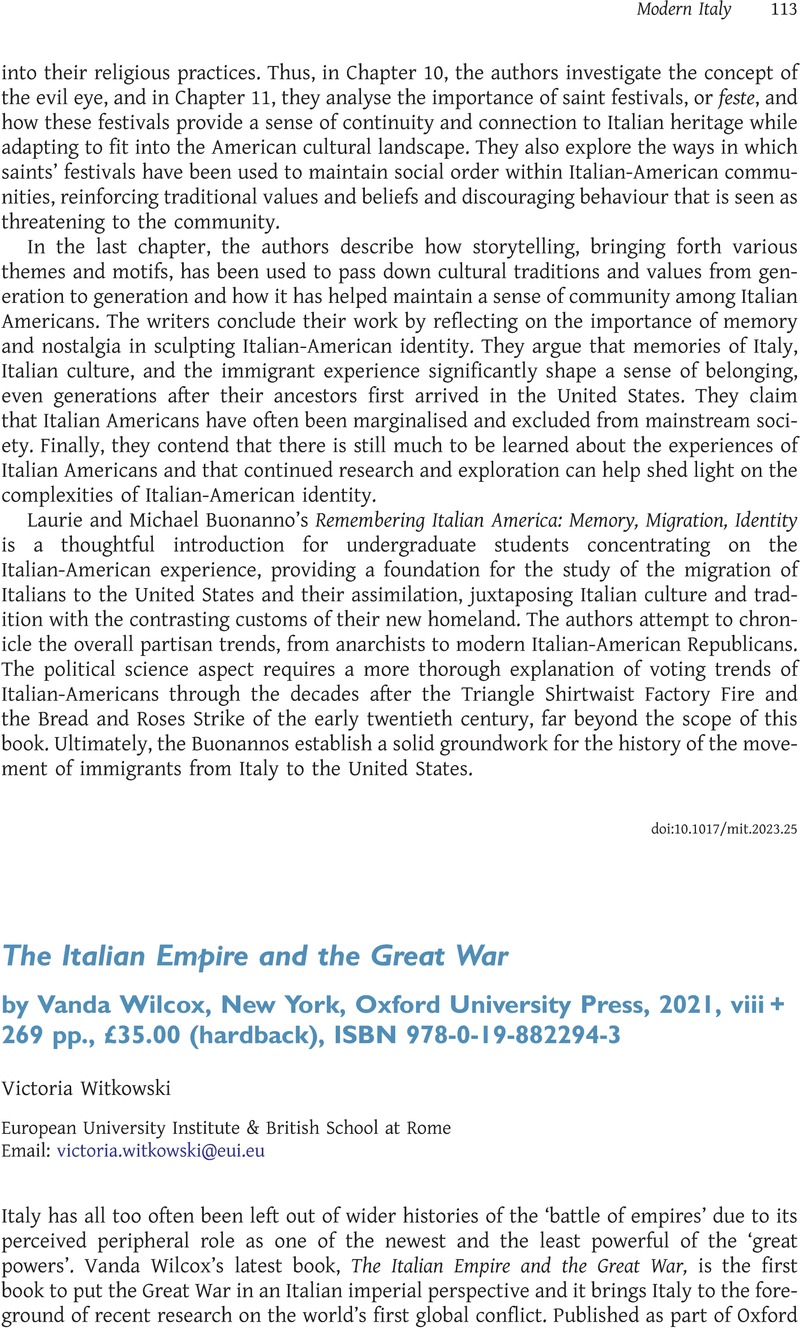No CrossRef data available.
Article contents
The Italian Empire and the Great War by Vanda Wilcox, New York, Oxford University Press, 2021, viii + 269 pp., £35.00 (hardback), ISBN 978-0-19-882294-3
Review products
The Italian Empire and the Great War by Vanda Wilcox, New York, Oxford University Press, 2021, viii + 269 pp., £35.00 (hardback), ISBN 978-0-19-882294-3
Published online by Cambridge University Press: 23 May 2023
Abstract
An abstract is not available for this content so a preview has been provided. Please use the Get access link above for information on how to access this content.

- Type
- Book Review
- Information
- Copyright
- Copyright © The Author(s), 2023. Published by Cambridge University Press on behalf of the Association for the Study of Modern Italy


